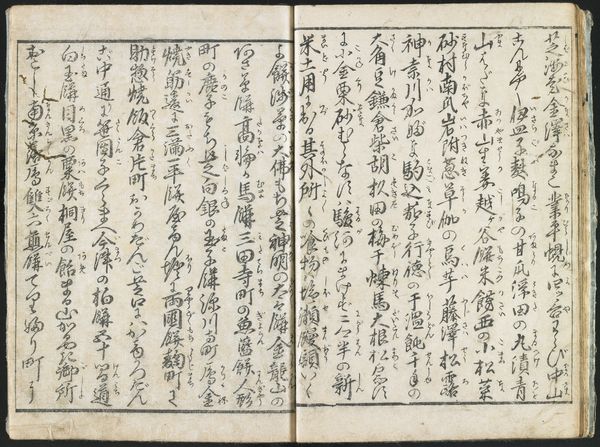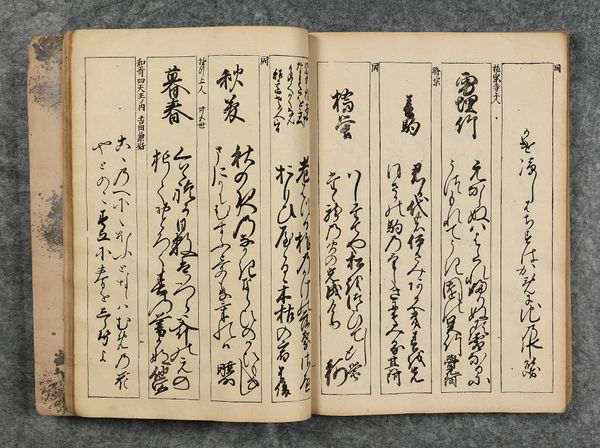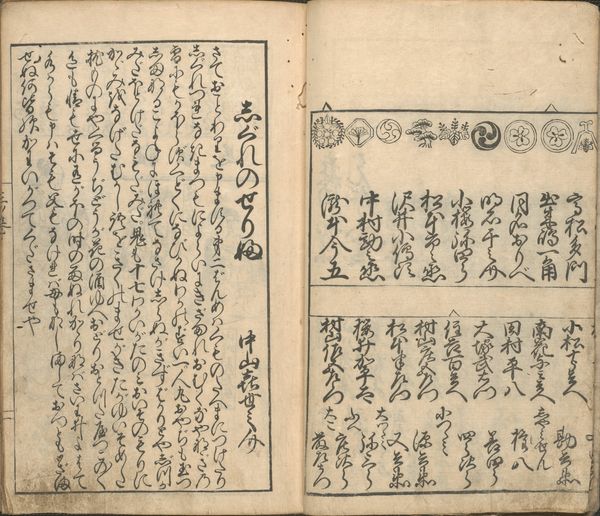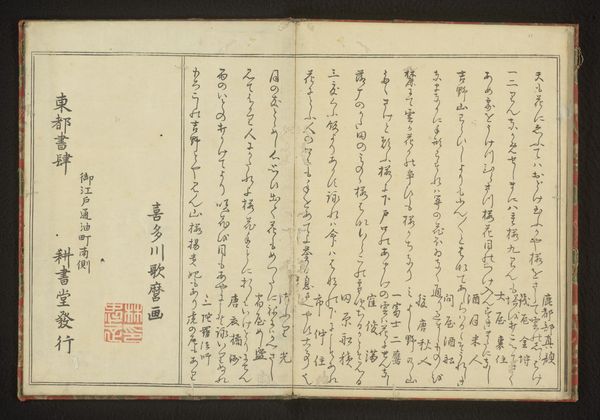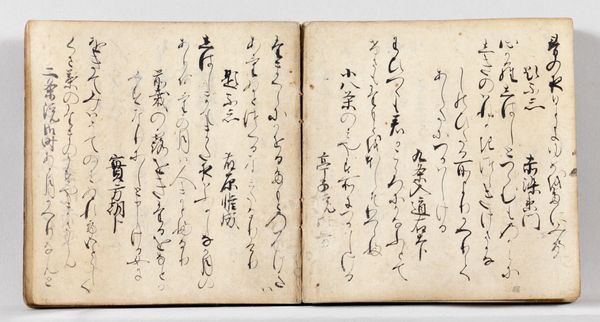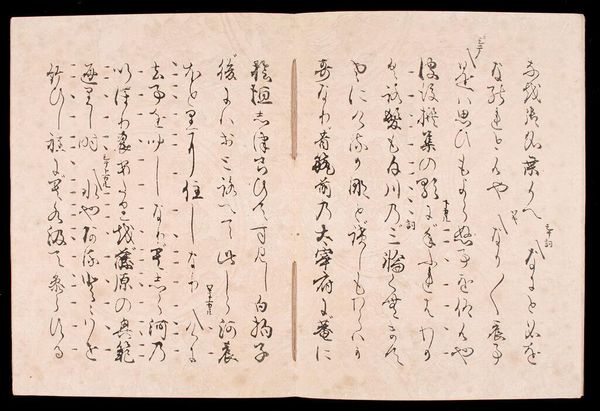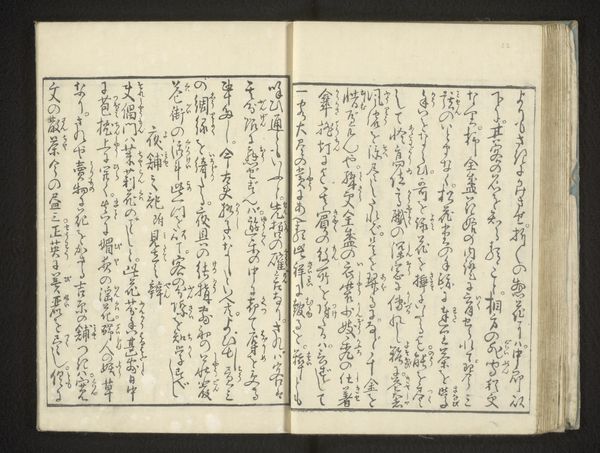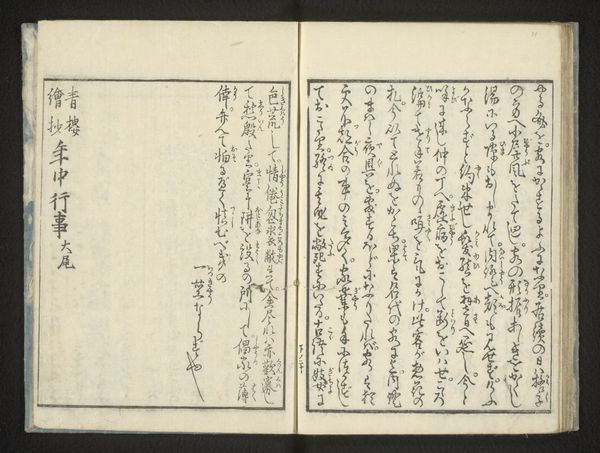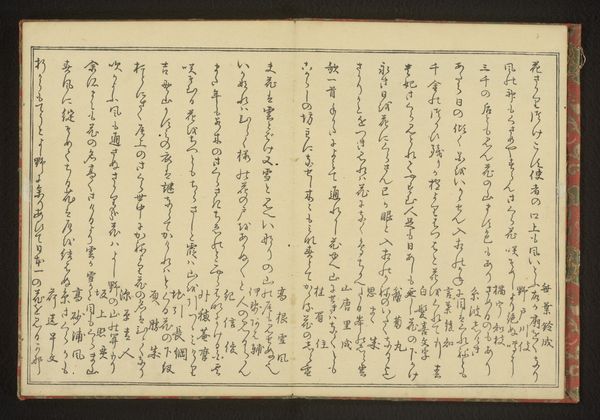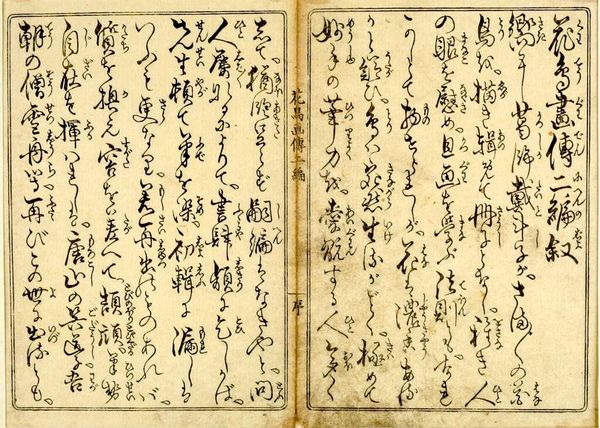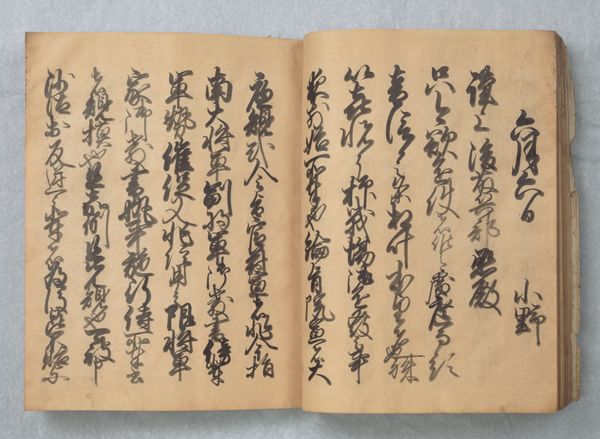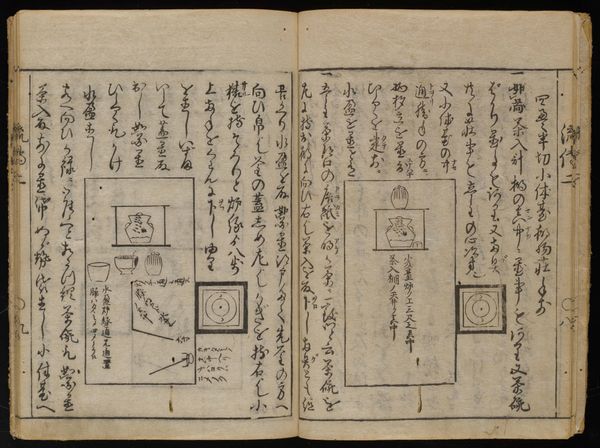
drawing, textile, paper, ink, pen
#
drawing
#
aged paper
#
toned paper
#
ink paper printed
#
book
#
asian-art
#
sketch book
#
textile
#
japan
#
paper
#
personal sketchbook
#
ink
#
pen work
#
sketchbook drawing
#
pen
#
watercolor
#
calligraphy
Dimensions: 8 11/16 × 6 1/4 × 1/2 in. (22.07 × 15.88 × 1.27 cm)8 7/8 × 6 3/4 × 2 1/16 in. (22.54 × 17.15 × 5.24 cm) (all volumes with case)
Copyright: Public Domain
Editor: So, this is "Promulgation of the Contemporary Tea Ceremony" by Endō Genkan, dating back to 1694. It's ink on paper and textile, a sort of illustrated manuscript from Japan. I find the calligraphy incredibly striking, even though I can't read it. It has a certain energy to the penmanship. What do you see in this piece from a formal perspective? Curator: Indeed. Observe first the aged quality of the paper; the toned effect evokes a sense of history. Then, turn your attention to the arrangement of text; note how the artist skillfully employs varied strokes and line weights to construct distinct calligraphic forms. We should also acknowledge that pen work delineates forms on paper. Editor: Yes, the different line weights are very apparent. What about the composition overall? Is there a kind of structure, even within individual pages? Curator: Certainly. Consider the grid-like framework formed by the vertical lines that contain the script; the verticality imposes order. Additionally, recognize the visual rhythm achieved through the placement of textual blocks; it alternates with varying densities across the page. Editor: The composition feels almost like a woven tapestry. The ink is really consistent given how old this is, don't you think? Curator: Reflect on how the inherent materiality of the ink, when applied with mastery, results in rich blacks; the blacks produce a range of tonal gradations and shadows that bring texture to flat planes, enhancing aesthetic dimension within visual expression and imbuing surface elements and depth alike. Editor: It's fascinating to consider the artist's intention simply through line, form, and composition. Thank you, I see so much more now. Curator: You are most welcome. Contemplate this method when faced with future artworks.
Comments
minneapolisinstituteofart almost 2 years ago
⋮
Contemporary guide to tea ceremony, Enshū school. In the mid-1600s, an aristocrat named Kobori Enshū (1579–1647), who was also a skilled poet, artist, flower arranger, and tea master, developed his own style of the tea ceremony based on the aesthetic ideal of kirei-sabi, which combined the notions of refined beauty (kirei) and patina, the wear associated with age (sabi). Enshū’s kirei-sabi style, which partially supplanted wabi (imperfect or rustic) as the dominant aesthetic, had a great impact on the design of gardens and teahouses, decoration of teahouse interiors, and the production of tea wares in the mid-1600s. Two generations later, Endō Genkan, an adherent of the Enshū School of tea, wrote a number of important books on the Japanese tea ceremony including the volumes displayed here, which sought to disseminate Enshū’s kirei-sabi tea aesthetic.
Join the conversation
Join millions of artists and users on Artera today and experience the ultimate creative platform.
